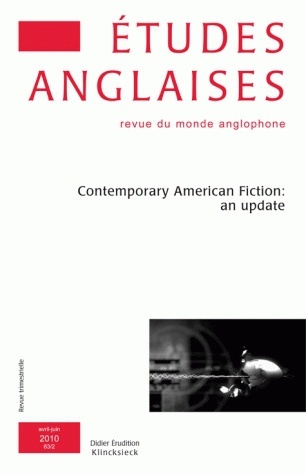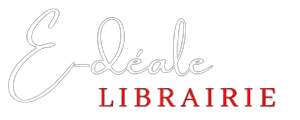Stéphane VANDERHAEGHE - Glossing Ben Marcus' Notable American Women (2002)
What can one say in general of a text by Ben Marcus which would not already be somehow compromised by the radicalism of the writing? What can one say in particular of Notable American Women which would not already be disclaimed or "un-said" by the fiction of its very language? A fiction that makes this self-referential piece of writing—self-referential in a sense that would have to be redefined, along with the very notion of “sense” itself—hover above emptiness and verge on silence. Yet precisely, can one set limits to silence and emptiness, can one keep them at bay? Or rather, does this absence not keep any critical contribution at a distance? What form then can one bestow on the silence and vacancy that permeate the text if not that of superfluity, until both fiction and criticism converge in a same refusal, authoritarian as it may appear, of authority itself, i.e., the authority of their own presuppositions and their very language?
Que dire en général d'un texte de Ben Marcus qui ne soit déjà, d'une façon ou d'une autre, d'emblée compromis par la radicalité de l'écriture ? Que dire en particulier d'un texte comme Notable American Women qui ne soit déjà démenti ou « dé-dit » par la fiction de son propre langage ? Fiction qui fait ainsi vaciller cette écriture auto-référentielle en un sens qu'il convient de redéfinir – comme du reste il conviendrait sans doute de redéfinir la notion même de sens – au-dessus du vide et aux confins du silence. Mais précisément, peut-on délimiter le vide et le silence, les tenir en respect ? N'est-ce pas plutôt cette absence qui tient tout apport critique à distance ? Quelle forme dès lors donner à ce silence, à cette vacance dont le texte semble empreint, sinon celle de la redondance, jusqu'à faire voisiner critique et fiction dans un même refus, tout autoritaire qu'il puisse paraître, de l'autorité même, autorité de leurs a priori et de leur propre langage ?
Anne-Laure TISSUT - This Is an Elephant: How to Do Things with Fiction
Even more blatantly than other innovative contemporary work, The Water Cure illustrates that traditional categories of genre no longer stand. Percival Everett's book blends poetry and prose, text and pictures, drama and philosophical meditation, while language itself increasingly comes under scrutiny and into question. The medium of fiction is used to explore understanding and representation: how do we make sense and conversely how much does it take for meaning to collapse or disintegrate? Ultimately, the question is raised of the use of fiction, and the answer offered suggests its uselessness: a comforting absence of immediate purpose that implies a possibility of radical changes for whoever runs the risk of reading it.
De façon encore plus visible que d'autres œuvres innovantes contemporaines, The Water Cure illustre la caducité des catégories génériques traditionnelles. L'avant-dernier livre de Percival Everett mêle prose et poésie, texte et image, drame et méditation philosophique, tandis que le langage, objet d'un intérêt croissant et soumis à examen, est reconsidéré. Le medium de la fiction permet l'exploration des modes de compréhension et de représentation : comment faisons-nous sens et, à l'inverse, quelles sont les conditions suffisantes à la désintégration du sens ? Ce livre pose la question de l'utilité de la fiction, et la réponse offerte en suggère l'inutilité : rassurante absence de propos immédiat, impliquant la possibilité de changements radicaux pour qui court le risque de la lecture.
Marc AMFREVILLE - “Born into Absence”: Jayne Anne Phillips' Lark and Termite
Exploring Aristotle's and Augustine's conceptions of time, but especially relying on the psychoanalytical concept of Nachträglichkeit (“deferment”) and its stimulating reading by Derrida in “Freud and the Scene of Writing,” this paper thinks of Lark and Termite, Jayne Anne Phillips's latest novel, in terms of trauma. It particularly delves into the notion of Bahnung (“Breach”), and intends to demonstrate that the labor of writing follows an a-chrono-logical, non causal pattern. Termite, the mentally-impaired boy, “born into absence,” reveals himself to be the active principle of a text in which the child is the father of the man and the present engenders the past. The springs of creation must then be sought in a subtle rhyming interplay that weaves the poetical and “magically unrealistic” fabric of the novel.
En s'appuyant sur l'opposition de la conception du temps chez Aristote et Augustin, mais surtout en se fondant sur le concept psychanalytique de Nachträglichkeit (« l'après-coup ») et la relecture qu'en fait Derrida dans « Freud et la scène de l'écriture », cet article analyse Lark and Termite, le dernier roman de Jayne Anne Phillips, en termes de trauma. Il se penche notamment sur la notion de Bahnung (« frayage »), et tente de démontrer que le travail littéraire de la trace obéit à une logique autre que celle de la chronologie ou de la causalité. Termite, l'enfant handicapé mental qui naît à, de, et dans l'absence, est aussi le principe actif d'un texte où le fils engendre le père, le présent le passé, et où les ressorts de la création sont à chercher dans un jeu subtil d'échos et de correspondances qui donnent à ce roman « magiquement irréaliste » sa matière poétique.
Jean-Yves PELLEGRIN - Tactics Against Tic-Toc: Browsing Steve Tomasula's New Media Novel
TOC, Steve Tomasula's latest multimedia novel, presents a fabled genealogy of time from its birth to its collapse and goes back to the origins of the catastrophe: a linear, abstract and universal time, a time decoupled from processes–clock-time–has supplanted natural cycles. Clocks, which have sprung from an indissoluble conjugation of the verbal and the temporal, burden our apprehension of processes and life with a sense of direction and discontinuity inherited from the structures of language. To counter the influence of clocks and the “care” they manufacture, TOC dismantles their linguistic machinery and causes them to break down. Following in Augustine's footsteps, Tomasula explores the impasse which, being caught in “the groove of language,” our representations of time have reached. Since the deadlock is unbreakable, the novel offers to simply turn away from it; leaving behind our concepts of time, it suggests a different approach to inhabiting time. Allowing the user to navigate according to the mood of the moment, it makes browsing a privileged path towards another way of living out time.
TOC, dernier roman multimédia de Steve Tomasula, présente une généalogie fabulée du temps, de sa naissance à son effondrement, et remonte aux sources de la catastrophe. Un temps linéaire, abstrait et universel, décroché des processus, a évincé les cycles naturels : le temps chronométré des horloges. Machines nées d'une indissoluble conjugaison du verbal et du temporel, elles infligent à notre appréhension des processus et de l'existence les pesanteurs d'un sens et d'une discontinuité hérités des structures de la langue. Pour contrer l'influence des pendules et le « souci » qu'elles engendrent, TOC en démonte les rouages linguistiques et les met en panne. À la suite de saint Augustin, Tomasula explore l'impasse de nos représentations du temps prises dans « le pli de la langue » et propose, à défaut de résoudre cette aporie, de lui tourner le dos. Laissant là notre pensée du temps, le roman suggère une manière différente d'habiter celui-ci et fait de la navigation au gré du moment une voie d'accès privilégiée à cette autre façon de vivre le temps.
Brigitte FÉLIX - Three Hundred and Sixty : Circular Reading in Mark Z. Danielewski's Only Revolutions
Published in 2006, Mark Z. Danielewski's third novel, Only Revolutions is a strikingly visual text made of the combination of two figures (the circle and the line), two colors (golden and green), and two narrative voices. The rather sophisticated and systematic principles that rule the composition of the book also prescribe new ways of reading following the poetics of circularity generated by the writing. This paper shows how such a poetics results from the creation of a narrative out of the interaction between writing, print text, and book.
Le troisième roman de Mark Z. Danielwski, Only Revolutions, publié en 2006, est un texte très visuel qui résulte de la combinaison de deux figures (le cercle et la ligne), deux couleurs (le doré et le vert) et deux voix narratives. Les principes plutôt sophistiqués et systématiques qui règlent la composition du livre prescrivent un nouveau mode de lecture qui corresponde à la poétique de la circularité crée par l'écriture. Cet article tente de montrer qu'une telle poétique résulte de la création d'un récit grâce à l'interaction entre écriture, texte imprimé et livre.
Arnaud REGNAULD - Machinic minds and posthuman bodies : the complexities of intimacy in three electronic works by Shelley Jackson.
In her three electronic works, Shelley Jackson exacerbates the tension between self-writing and the diffraction of subjectivity, as she engages with a more explicit autobiographic form, shifting from hyperfiction in Patchwork Girl (1995) to a fictionalized exercise in remembering through the scrutiny of her body parts in My Body & A Wunderkammer (1997), while she eventually explores a pseudo-historiographic and documentary approach of the games she used to play with her sister in The Doll Games (2001), a work closer to an online family album of sorts. The present article purports to interrogate the preservation of the intimate in a context of public self-exposure through an archival electronic medium.
Au fil de ses trois œuvres électroniques, Shelley Jackson exacerbe les tensions entre l'écriture de soi et la diffraction de la subjectivité, alors même qu'elle s'attache à une forme plus autobiographique, passant de l'hyperfiction dans Patchwork Girl (1995) à un exercice fictionnel de remémoration à travers l'examen des parties de son corps dans My Body & A Wunderkammer (1997). Enfin, avec The Doll Games (2001), œuvre plus proche d'une sorte d'album de famille en ligne, elle explore une approche pseudo-historiographique et documentaire des jeux qu'elle pratiquait avec sa sœur. Le présent article se propose d'interroger la préservation de l'intime dans le contexte d'une exposition de soi via un médium électronique de nature archivique.




